But first a bit about me. I work at the Jain Family Institute, an applied research organization in the social sciences, where I work on modeling and data analysis tools.
The Founder thefounder.biz
I've also worked on a few games in the past...these games are usually rhetorical, trying to make a specific point.
This is The Founder: A Dystopian Business Simulator, a game I released in 2017. In it you play the founder of a startup, and you have the simple goal of keeping your investors happy by maintaining continuous growth. It's up to you whether or not you accept this goal and the many moral compromises and harms that it entails.

Brief background on the book: it's diagnosis of land as a central issue, focus on planning
I was brought on around March 2021 by Arthur.
Initial call notes: https://docs.google.com/document/d/1XDd27C3ejHyJXgE14QzBAiEQnzLfBmjahXK_iXn78Mg/edit
I'd been thinking about making a game about climate change and industrial ecology; this is a sketch of the idea. I thought there'd be something interesting/exciting about a game where you can see all the material flows in the world and somehow intervene on them. Something like Factorio, if any of you are familiar with that, where you build these intricate machines that move and process materials. This game seemed like a good opportunity to work on an adjacent topic and learn a bunch too.
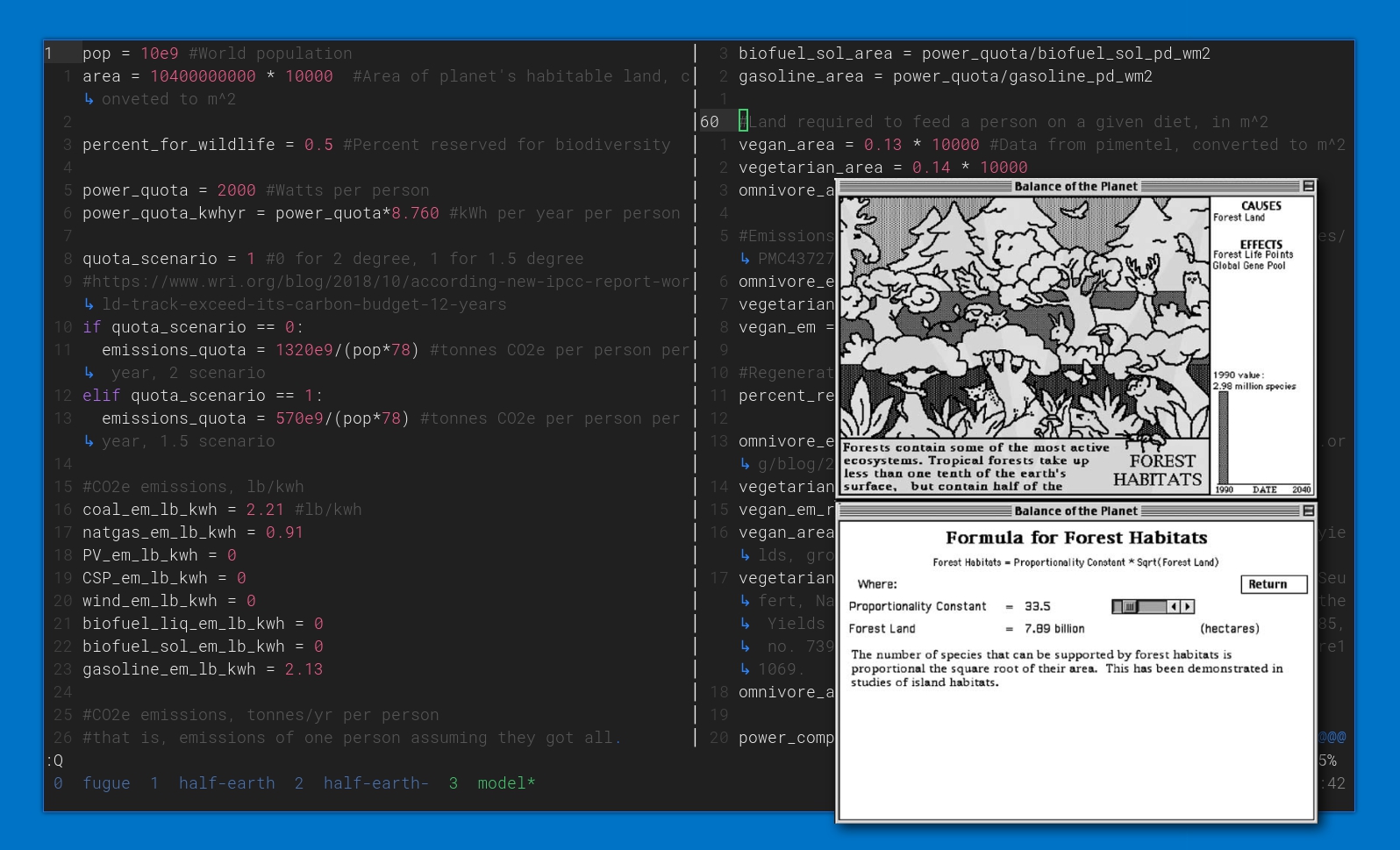
Drew had written a linear model used in the book, and I believe the original idea for the site was more of a planning calculator interface over this model, perhaps more akin to something like Chris Crawford's Balance of the Planet (1990), where the player is similarly adjusting parameters of a global model to influence planetary health.
In this more basic version you could choose e.g. your energy mix, energy use levels, meat consumption, etc, and figure out the allocation of land, emissions, etc that were required. We wanted to make that a richer experience and put more of a narrative around it. The book has these great vignettes about what life might be like under Half-Earth socialism—its pacing, people's concerns and values, etc—and so we wanted to have the game reflect that too.
I'll quickly go over two main parts of the game just so the rest of this overview makes sense.
I can explain in more detail once I start demoing the game.
The game sees you as a planner elected following an international socialist revolution. You're charged with undoing the climate and biodiversity crises: bringing the temperature anomaly down, lowering the extinction rate, and getting to negative carbon emissions.
You have two main levers you can pull: you can implement projects, which are depicted here. These include: pursuing research, building infrastructure, or implementing policies.
Second is by changing process mixes. We model four main production outputs: electricity, fuel, plant calories, and animal calories. We focus on these because they are by far the most significant in terms of impacts and importance.
So you can, for example, mandate that all electricity production be met with solar photovoltaic power.
Reading Group
we had a lot of ground to cover
- initial steps were a reading group led by Chiara, to learn more about socialist cybernetics/cybernetic planning, cybernetic/complex systems management interfaces, climate modeling, and to play games that cover similar ground for inspiration and guidance
- reading group list (maybe list these out in the slide): https://www.dropbox.com/scl/fi/nz4w6kbxdtay7toec2zmu/Half-Earth-Socialism-Reading-Group.paper?dl=0&rlkey=kljj0t4djdk6qkxm7ezwxjsvm
Frostpunk 11 Bit Studios
This is one game called Frostpunk, where iirc this ice age occurs and the planet becomes inhospitably cold. You manage a small group of people trying to stay warm. So the whole game is organized around heat—producing it, insulation, how it decays over distances, etc. And then of course there are other submechanics like food, people's contentedness, resource management. You have to make a lot of policy decisions for which there is no clear good answer, and will probably come to bite you later on. I think we drew from Frostpunk's decision-making in the face of crisis, and also how managing people's contentedness is a challenge, for our game. Though Frostpunk feels way more dour and brutal than our game does.
Reigns Nerial
The other game we drew a lot of inspiration from was Reigns. Really simple but powerful concept. You are basically presented with events and then make a binary choice. your choices influence the balance of power in your kingdom, and you want to balance everyone or else you lose. Flexible game session length, really easy to wrap your head around.
And they have a narrative that goes through each play session; it's one of those games that opens up to a broader scope than is apparent at first. I love games like that. I had some narrative ideas for Half-Earth Socialism in that vein but they didn't make the cut.
So we referenced Reigns a lot but its reactive nature didn't quite work for the long-term planning our game needed.
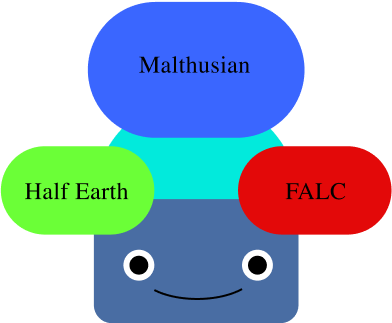
Accurate
Humorous
⟵Expressive
Quick*
Reflective of life under HES
The reading group helped us come up with ideas for our own mechanics and hone in on what we wanted to include in the game, and what we wanted it to communicate, and we figured out some key constraints.
ACCURATE: The priority of games generally is a fun and engaging experience. Games that are based on something often have to simplify things quite a lot give the player a better playing experience. But because of the nature of the book and the weight of the subject, we wanted it to prioritize rigor and accuracy a bit more than a typical game would. This was a huge challenge because with something as complicated as the planet, the details can matter a lot. And being inundated with details can mean a very unpleasant playing experience.
HUMOROUS: Climate change and ecological disaster are already very weighty topics without us needing to exaggerate it...we wanted to bring some levity to the game so that the player doesn't feel pummeled by depressing thing after depressing thing (although it does kind of happen because of the subject matter). So using dialogue, character design, etc, as outlets to lower the "seriousness" of the game and leave plenty of space for the content to do that.
EXPRESSIVE: another goal was for it to play like a political compass quiz, in a way...we had a few player "builds" in mind that made play feel expressive
QUICK: Shorter games that you play in rapid succession, to try different things. I think originally we wanted a session to be 5-10min...but sessions last far longer now. It takes at least 5 minutes just to soak in the game's starting content!
As mentioned above, take a cue from the book and convey the feeling of living under HES through dialogue and other narrative elements.
I saw progress in 5 main categories:
- main beats of the game/story
- art direction/game feel
- mechanics and game design
- legibility/information design
- technical requirements
Story
Game storyboard: https://docs.google.com/document/d/1I6AiileB-NYAQlMJXq1-RWC5-h9Z2YsWppS92tph-aY/edit
We had a document where we outlined the main beats of the game. I think this came together pretty quickly, mostly from Troy if I recall. We mostly stuck to this throughout and didn't require much further attention.
We wanted to give the game world a richer feel through events. They're also one main way players get feedback about their plans. And they allow us to develop character personalities a bit. But more importantly they allow us to represent way more than we could with the core game model alone. With a very simple probability system we can represent events like mass coral bleaching events, or cultural changes like a new cuisine trend of eating invasive jellyfish, without needing to make the model itself much more complex.
The events we have in the game pale in comparison to all the possible events one might think of for the future. They're what allow us to represent more detail than we could otherwise, but then that opens up an overwhelming amount of things we could represent. It's one of those areas where we had to just stop adding things at some point, even though we probably could have adding hundreds more.
Technical Requirements
We had a few technical constraints from the start; we wanted the game to be playable on mobile given that it's how most people are likely to encounter the game, and make it a web game for maximum portability and ease of development (targeting one platform rather than e.g. windows, ios, osx, linux, android, etc). As far as constraints go, this wasn't too bad. Though having to support multiple browsers and devices is a big development headache, and a lot of time was spent bug-fixing browser/device quirks.
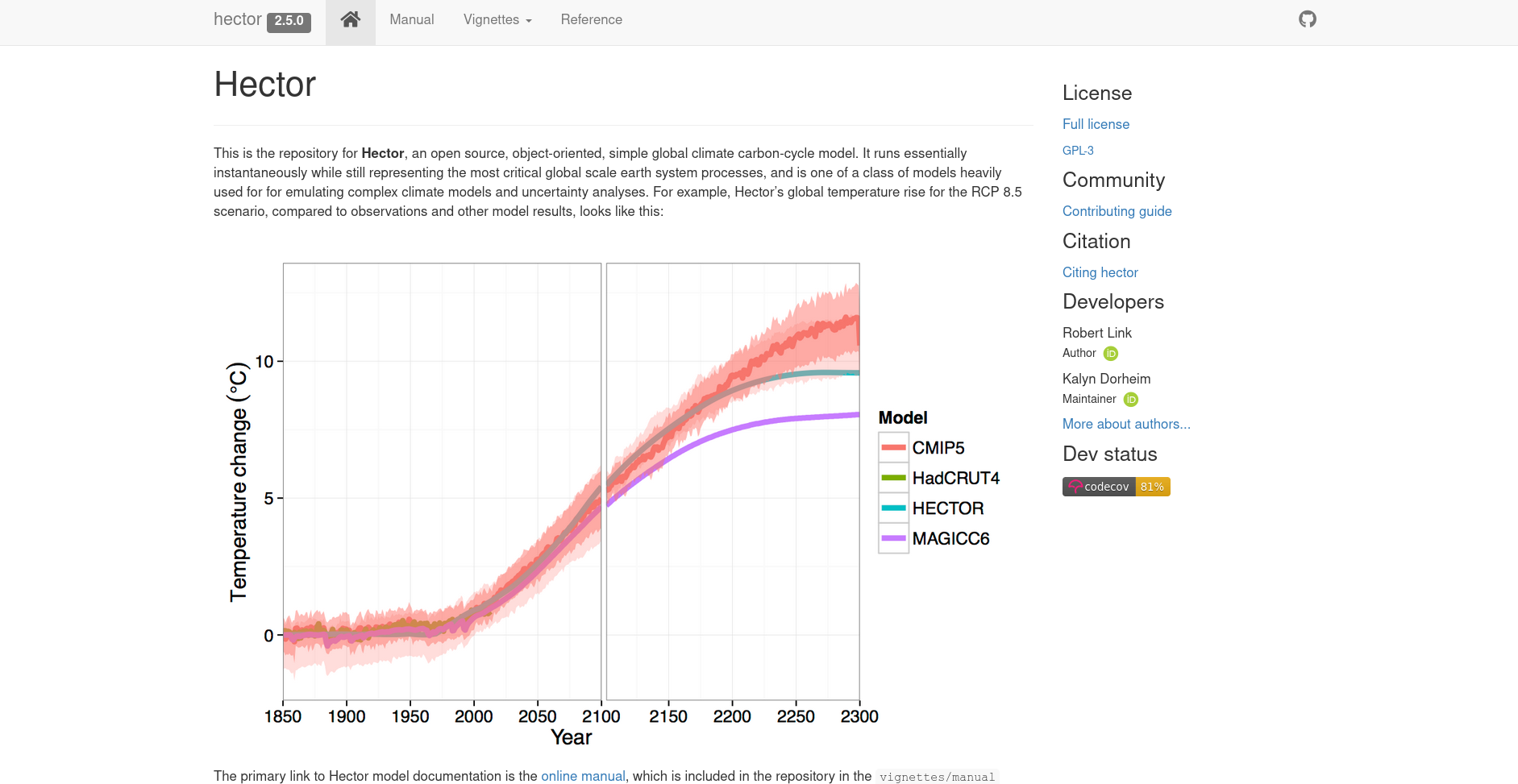
Relatively early on we knew we wanted to have some kind of climate model running. But climate models are usually huge, requiring supercomputers long periods to run. Drew suggested Hector, which is a "simple climate model"—runs much faster and on commodity hardware, but way simpler. From a technical standpoint I didn't really want to have a server crunching a climate model for several players at once, even if it's a relatively simple one, so we managed to get it to compile to run directly in the browser, so each player runs their own model independently.
We have some other models running too:
- biome model, not running on mobile but on desktop, which colors the world according to biome changes over time.
- linear programming model for determining production resource allocation and guided assistance in planning...ended up being reduced because it made development complicated and there weren't models available for the browser that handled the kind of optimization we needed.
The other major set of requirements were data requirements.
Processes: input requirements and impacts per unit output, current global process mixes
More generally: Current emissions, current biodiversity loss, population projections aggregated for each region, global per-capita demand for each of our outputs, estimate per-capita impacts based on regional income levels, and impacts and inputs for different sectors/industries.
Often very difficult to track down good numbers, a lot of variability in estimates, or estimates for only particular countries/regions available, etc. Some technologies are very new and so there aren't many estimates available at all, or for very limited cases. For example, with vertical farming.
Game Design
throughout there is a constant tension of level of detail and complexity/overwhelmingness for the player, and accuracy and simplicity. truly complex systems make for unfun games because they in their very nature inscrutable...a very frustrating experience. you never quite know why something is happening, is it because of something you did, is it because of something you didn't do, or did it have nothing to do with you at all? part of what makes a game fun is learning its rules and systems and one reasonably expects consistency/predictability and legibility in how the game responds to your actions.
on the one hand this isn't just meant to be a fun and engaging experience but also rhetorical, meant to accompany the arguments of the book. so there is a bit of a trade off in simplifying the game and making it more fun, but making it accurate enough that it's points are taken seriously
Regional System
I'll briefly describe two sets of ideas we had that I really liked but got cut for one reason or another
I remember "space" being a big concern. Given that the book focuses on land use, how we deal with space is really important. But it came in conflict with priorities like accuracy. Games might abstract space to make it more manageable, like using larger units of space which then reduces the level of detail you can represent spatially; or they might limit their focus e.g. to a single region or map or level. The earth is really big. We can't really represent it in great detail without just blasting the player with stuff to manage. So we could limit the player's focus at a given time to a single region. That's basically where this design came from.
- multiplayer version
-
more visual feedback/eye candy, zooming into regions, seeing wildlife return, etc...succeeding should feel really rewarding
-
something else we wanted to avoid was the "god view" in games, where the player unilaterally makes decisions of all kinds. a major emphasis of the book is democratic planning; and so we wanted to reflect that in the game. it's kind of challenging to do! Games are often fantasies of control...representing democracy in a game very difficult because it can disrupt that fantasy and make the game a frustrating experience.
I'm not sure we succeeded as much as we would have liked. The parliamentary system is supposed to represent that to some degree, and you can be ousted from power if you're too unpopular. But that's not quite the same as democratic planning. An early design of the game involved regions having a greater and more autonomous role (in the current game they mostly just exist to spatialize the game a bit, but they don't really do much on their own). The player would set targets and maybe some specific policies/projects but regions would go and figure out how to achieve those targets on their own. There would be more bargaining with regions to accept targets.
- one version, which was out of reach given our constraints, was a multiplayer one where different people play different regions, and perhaps elect one player to be a global planner for a term...regions have to negotiate with one another, like if I'm representing East Asia I want North America to reduce their energy usage in exchange for reducing my coal usage or something.
with the more regional version of the game we'd also have needed global resource distributions (which change frequently and are often unreliable)
Turn-Based System
- turn-based, like Into the Breach, where each turn is a year, and you have a preview of everything that will happen in the next turn or next n turns. like this natural gas plant will emit this much methane next turn. this patch of permafrost has 50% chance of melting by next turn. etc. doesn't really work for the global scale (where you can't deal with things like an individual power plant), but I still think you could make a fun and interesting game this way if you could get away with more simplifications and play some floating/detached region
- scientific uncertainty being a much bigger part of the game. you have access to climate models, or project/policy impact estimates, that all have a degree of uncertainty associated with them, and you can put more resources into policy analysis, academia, etc to narrow uncertainty bands
For the "space" question, this abstracts space a bit—the world might be a grid of 200 hex cells or something. But you lose a lot of resolution that felt important for the game's accuracy. In the end it felt like it would be better to abstract space away (you don't really deal with it directly in the game) rather than represent it in a misleading way.
Eventually we settled on this basic schema.
We have the game world system represented by this model.
The player intervenes on this system by implementing projects, which then change probabilities that trigger events, which further influence the system.
Card System
And for this schema, we use cards as the main organizing element. Basically all player actions (i.e. projects) are expressed through manipulating cards in some way.
Cards provide a convenient way to compartmentalize "abilities" and a discrete object for the player to think with.
There are still a lot of ways to use cards. One idea was to have your plan be something like equipment slots in an RPG, like Diablo (on the left here). But instead of a head slot for your helmet you'd have a concrete slot for your concrete production technology. Or something like that.
This is kind of how it works in Civilization 6 (on the right). I think we didn't go this route because it ended up being a bit too restrictive.
These are a couple other ideas—on the left we have something based around a deck. I think one idea was that your "plan" is a deck of cards that you assemble and use to react to events, under the idea that a good plan prepares you for the future. So if your scientists are telling you a major heatwave is likely, you'd have a mass cooling center policy prepared to respond to that heatwave, if it does happen.
This ended up not really working because it feels like busywork for the player—you're making two redundant decisions, the decision to establish the cooling centers, and the decision to use them when the heatwaves occurs. In trying to minimize extra actions, we'd assume that if you have the cooling centers in place, you'd want to use them.
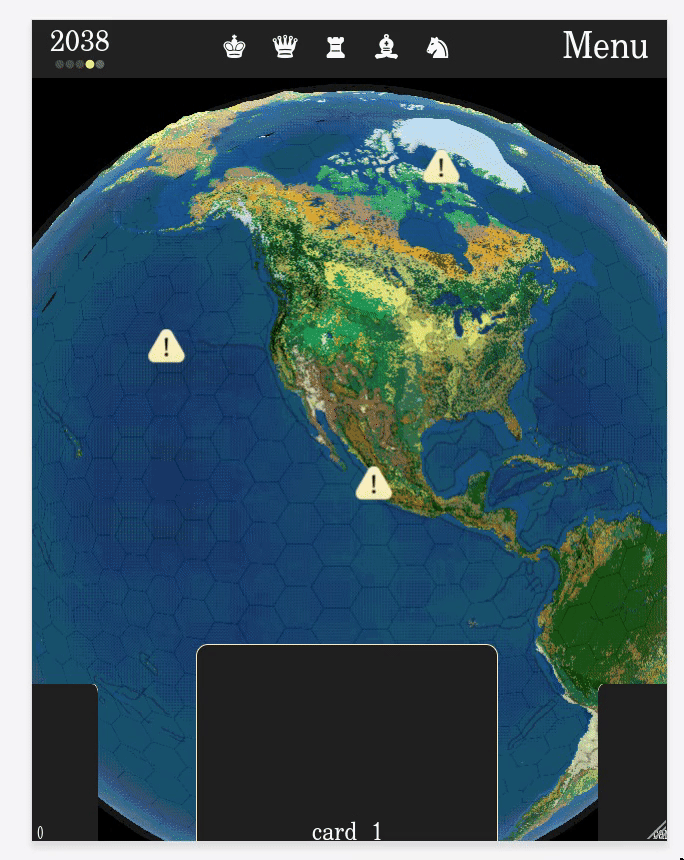

Some prototypes for card interactions. The on the right is a Reigns-like interface, with four directions instead of two. We ditched it because as I mentioned the Reigns reactive playstyle didn't quite fit what we needed.
We settled on this "scanning" interaction, which has a retro computing punchcard-like vibe. Conceptually this is like the deck idea...in a way you're scanning cards to add them to your deck (plan) so they make bad future events less likely.
Parliament
We wanted to add a political aspect to the game, in part to make gameplay more interesting (the player can't just do everything they want to do—to lessen the "god view" problem) and also add some drama and an opportunity to develop the world through some strong personalities. They also give players some scaffolding to develop playstyles...there is more clear guidance on what an accelerationist might want, for example.
Art Direction
This was mostly Son La's department but I will mention a few key points.


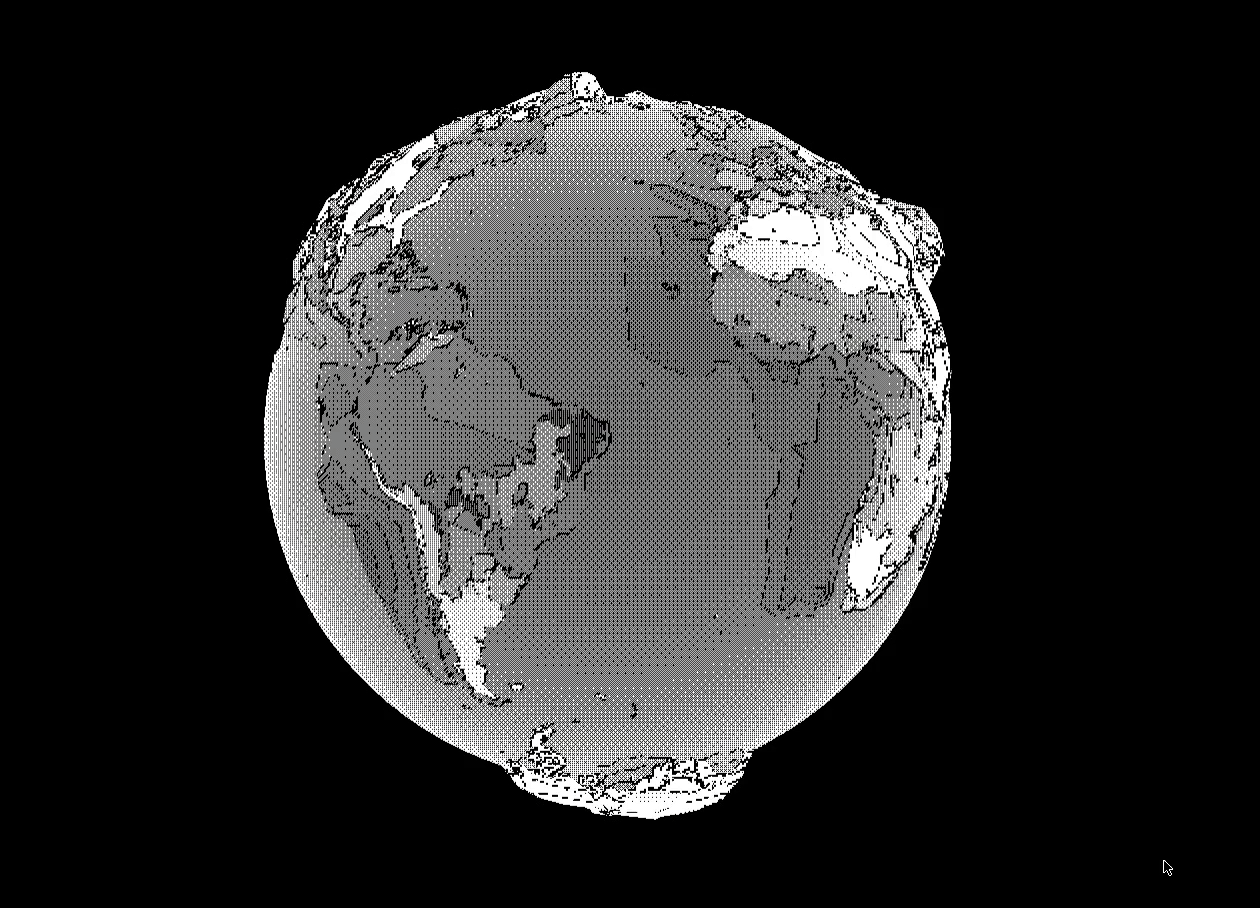

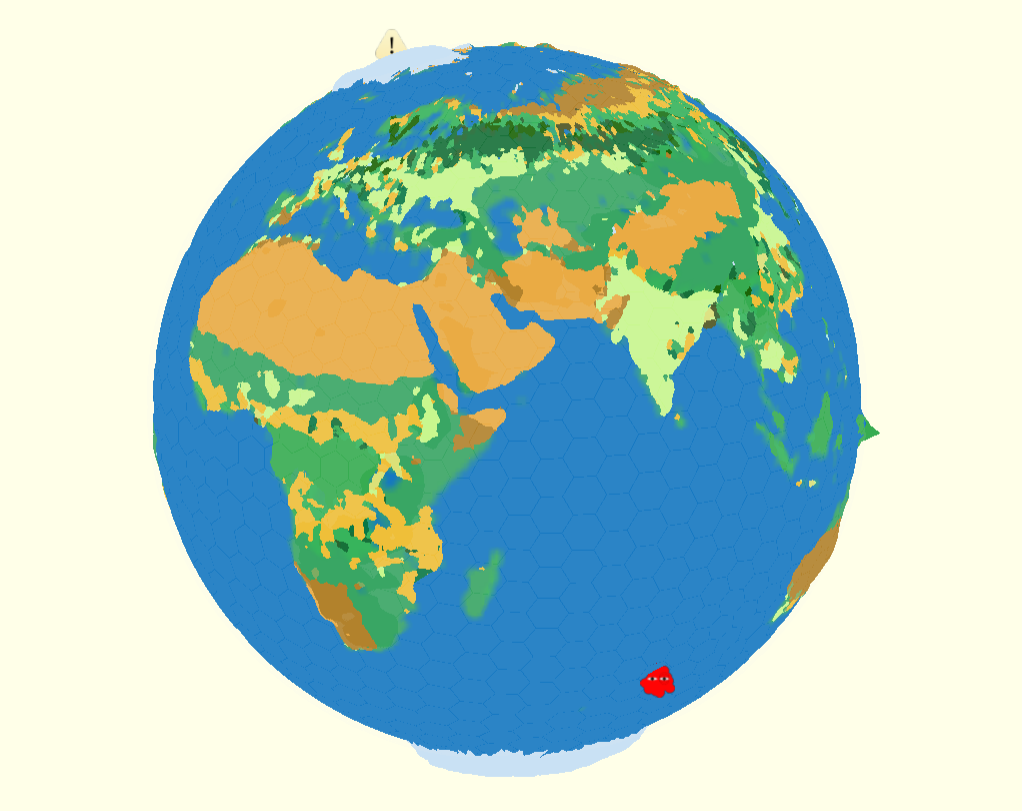
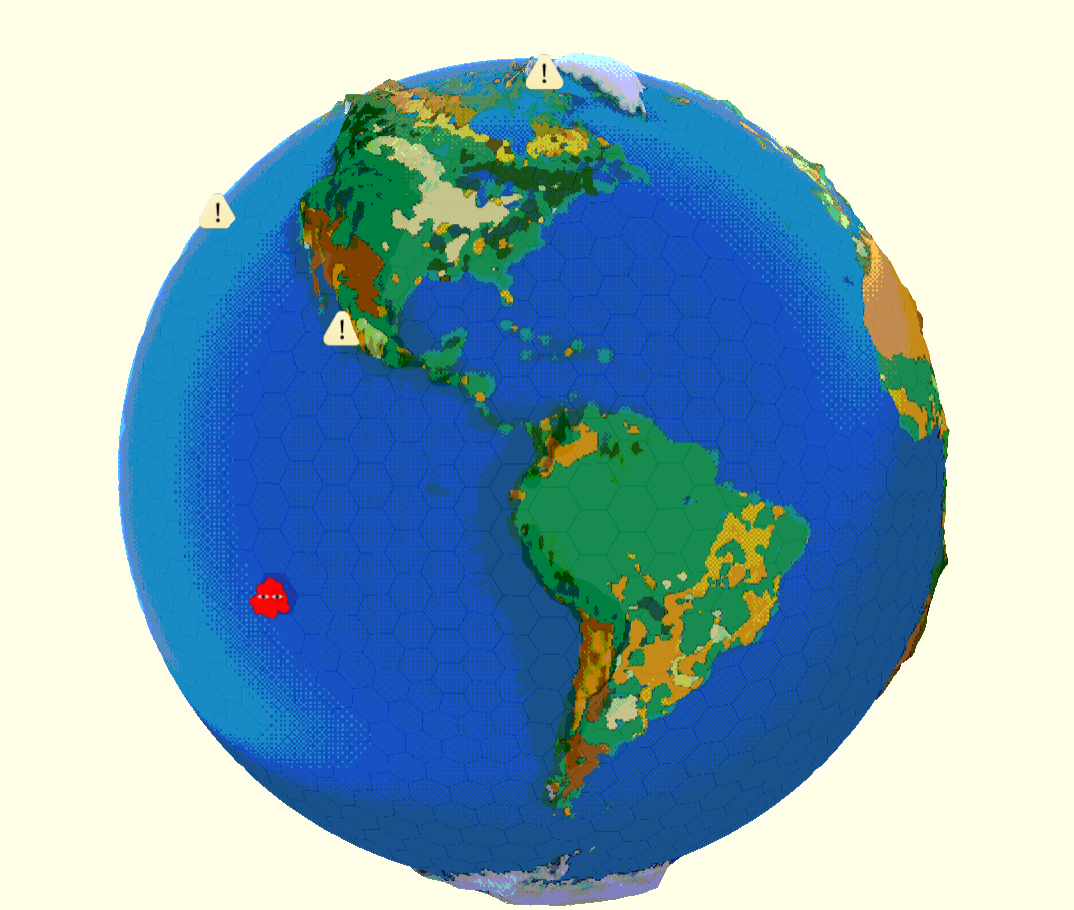
Our main aesthetic reference was soviet cybernetics and the early days of computing...so poorer color representation, dithering and pixellation, low resolutions. That kind of bitcrushed crunchyness.
I spent a lot of time trying to get the globe looking right
This is where it ended up
This is an example of the way we processed images to have that crunchier low-bit-depth look. Might be hard to see the detail from far away.
One motivation behind this look is efficiency. With our small team we didn't have a lot of time to make a lot of assets, but we also didn't want to just use random images that don't have a consistent style to them or look kind of generic. But here we could use a very simple image processing technique to take public domain/CC images and give them an interesting and coherent look.
Legibility
Something that ended up becoming very important was making information available and clear to the player. There's a lot of information to juggle.
All throughout the interface are tooltips and "factors" cards that breakdown what's contributing to whatever variable you clicked on. The hope is that whatever info you need to make a decision is available quickly, but it still is/feels like a lot of information!
Tooling
my general approach is to figure out the high-level mechanics and structure (what are the first-class entities), then build content authoring tools around that. it makes later work much quicker, makes it easier to experiment with the content, and helps me think through more ideas and possible conflicts in that level of the design
Showing the editor...first step is figuring out the core structures, then designing tools to manipulate them easily/creating content, ...place where most people working on the game interface with it
this brought us to a place where more people could start actively contributing to the game, and when we strated bringing in researchers/writers to fill in the game's content
The Automated Life Center for Humans and Machines @ MPI theautomated.life
This game is called "The Automated Life", which I developed for an economist at MIT, now at the Max Planck Institute. It uses his research on the capacity of people to change careers based on the skills those jobs require, and contrasting that against skills that are likely to be automated. You play as someone trying to survive against automation, finding a path through this network of jobs so that you are insulated from automation's effects.
DOMA
This last one is for the DOMA project, focused on developing new paths to home ownership in a world where it is increasingly out of reach. This is a housing market model with some game-like features, where we create a simplified version of a city and we model landlord and tenant behavior and rent and housing price changes to estimate the impact the DOMA system would have on housing in that city.

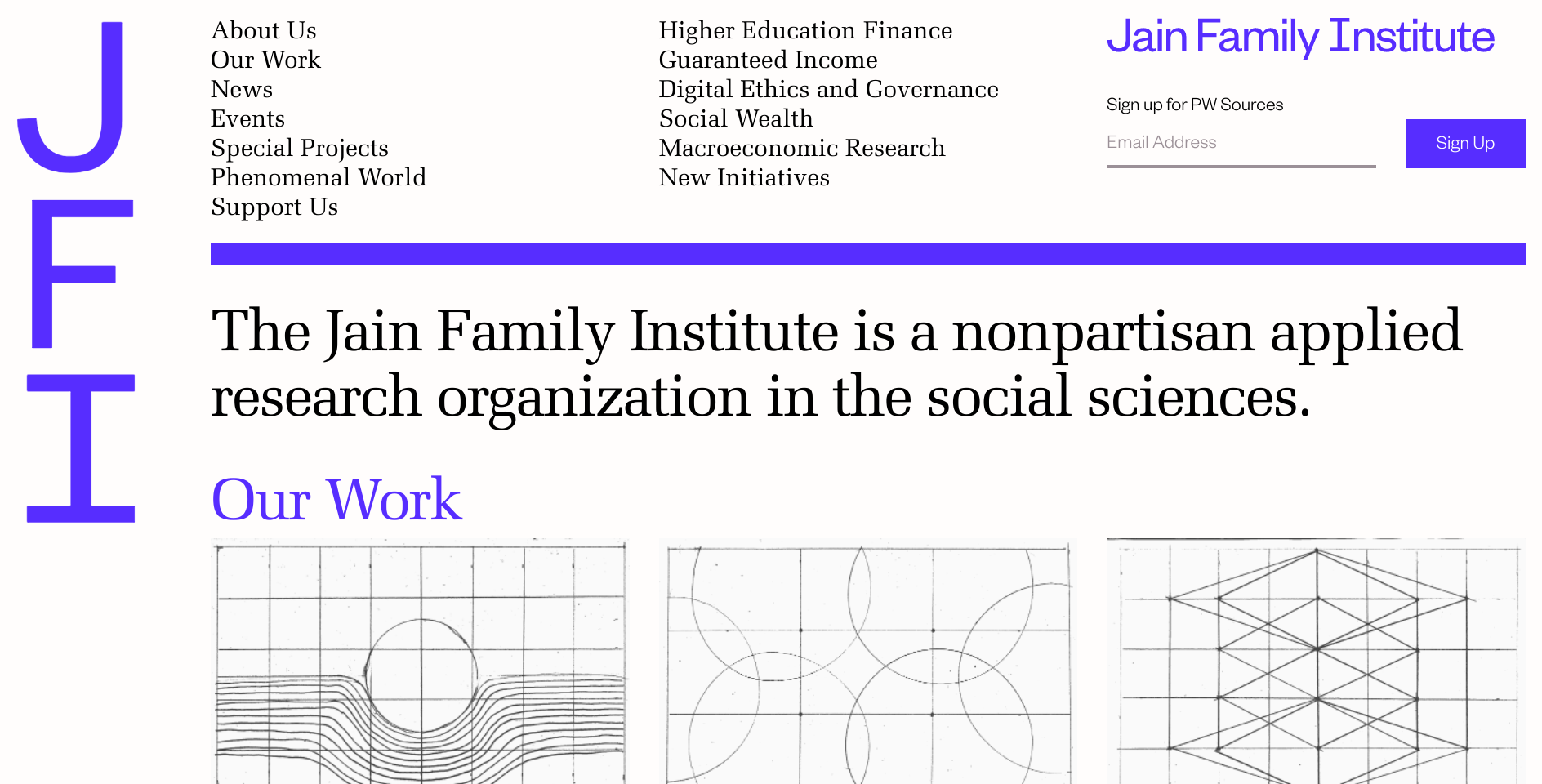
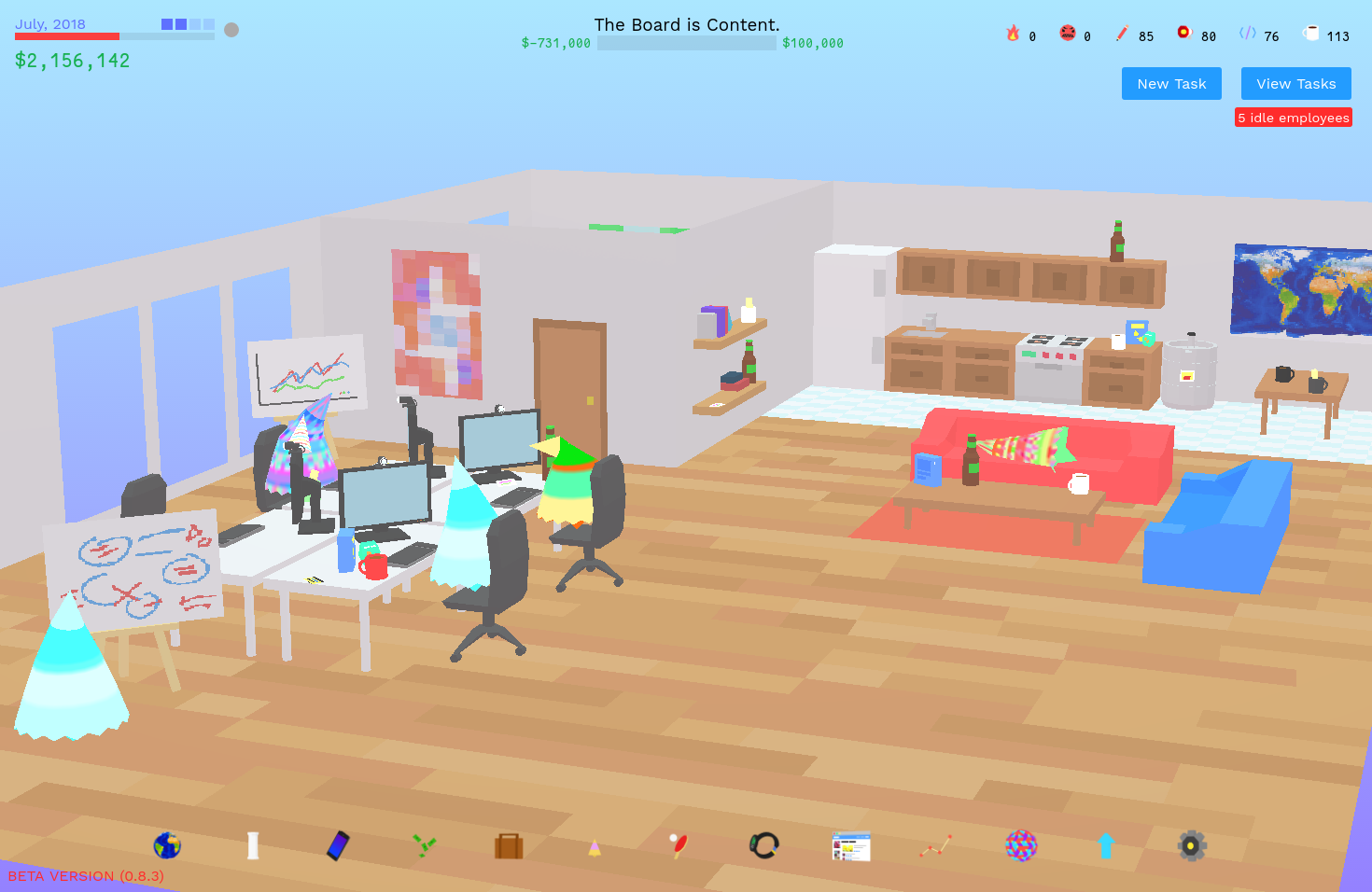
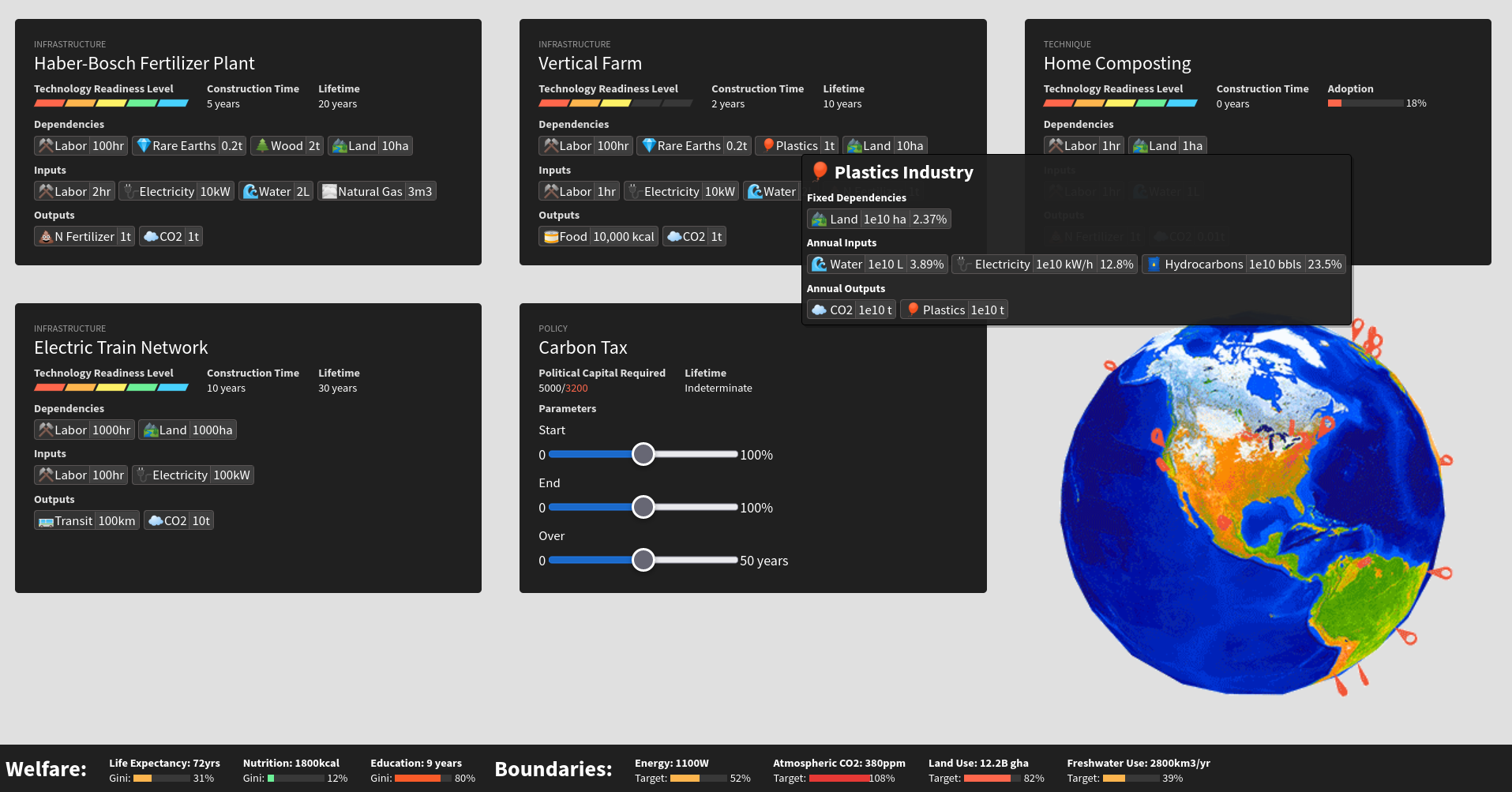
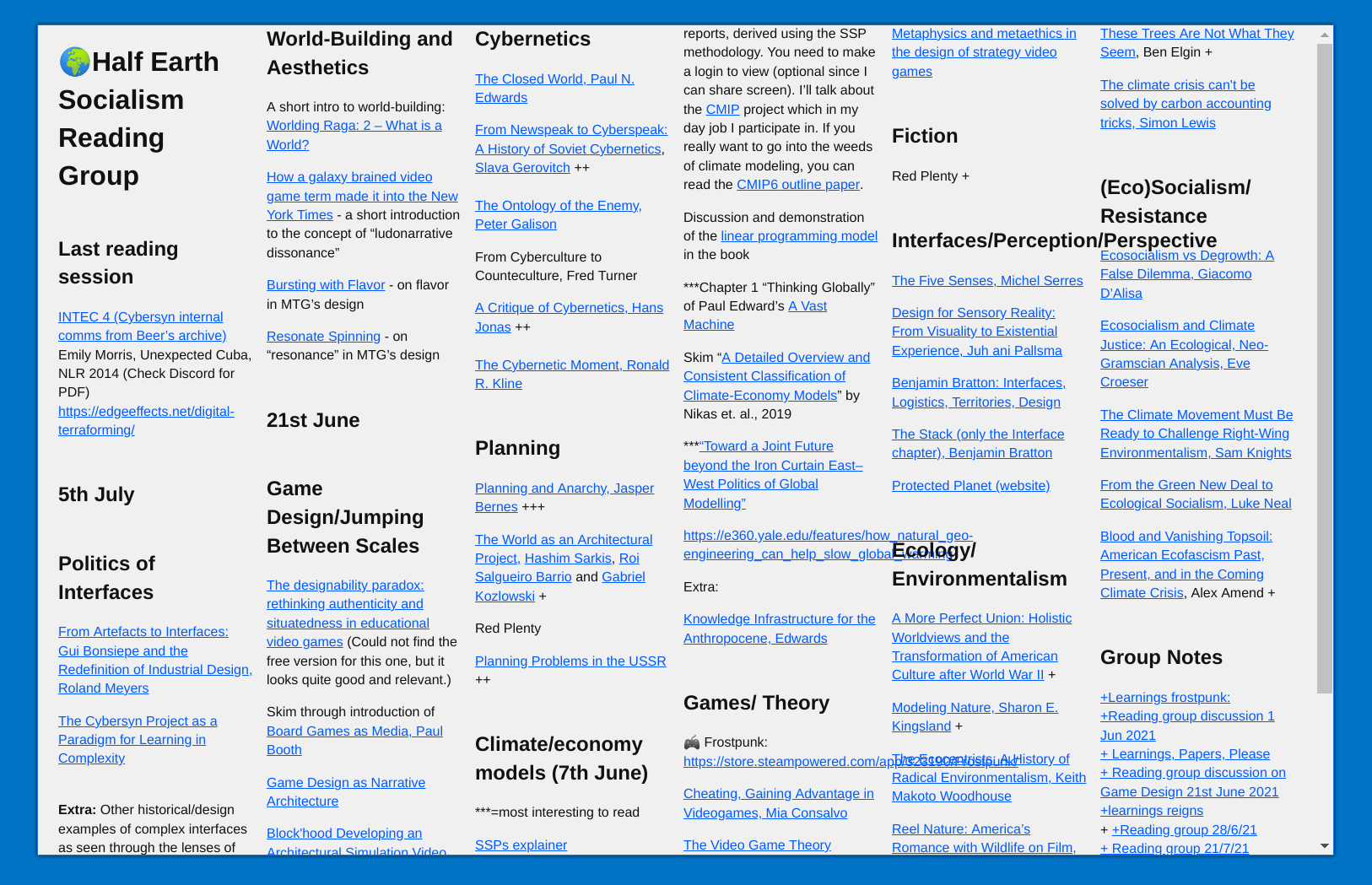
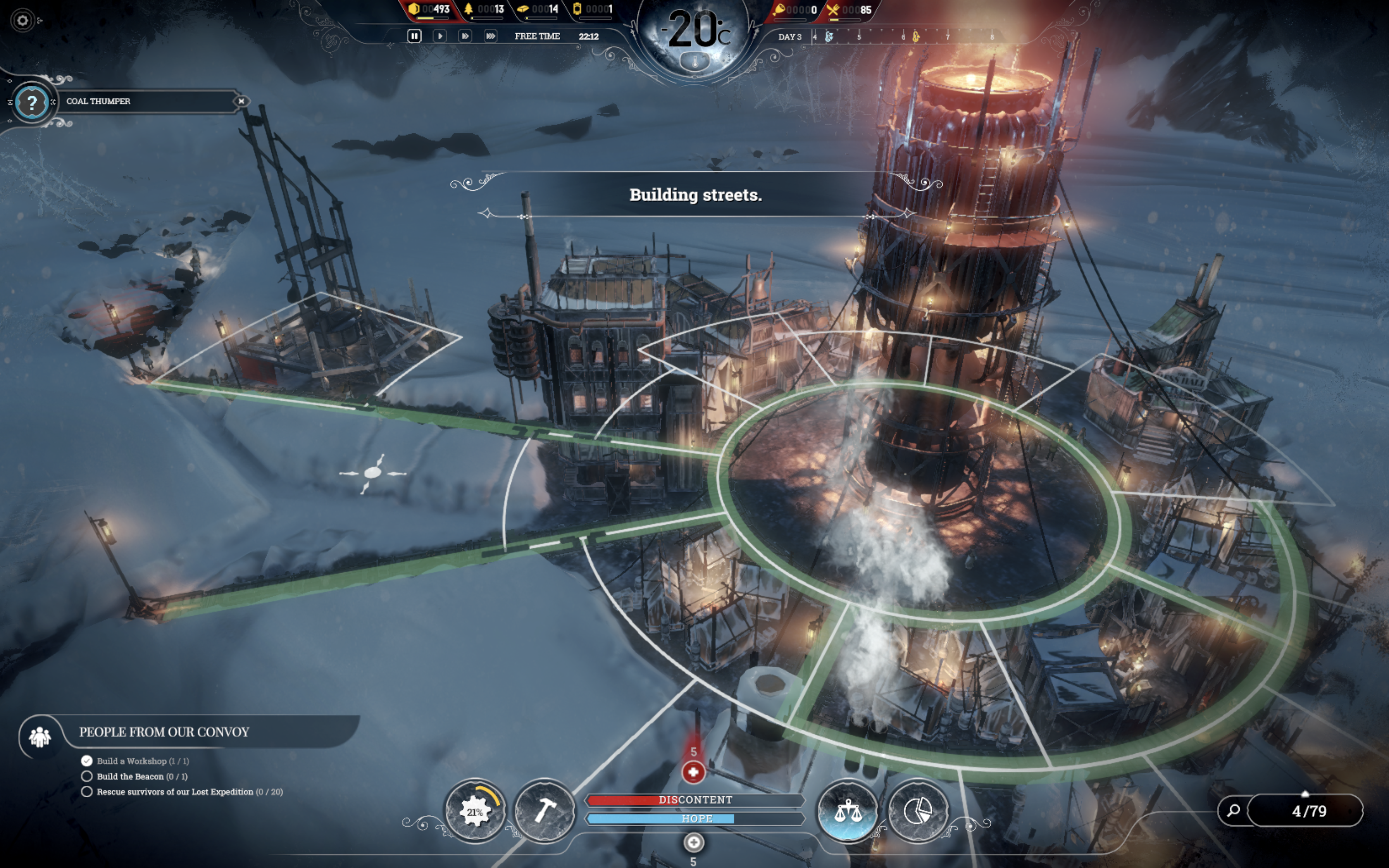

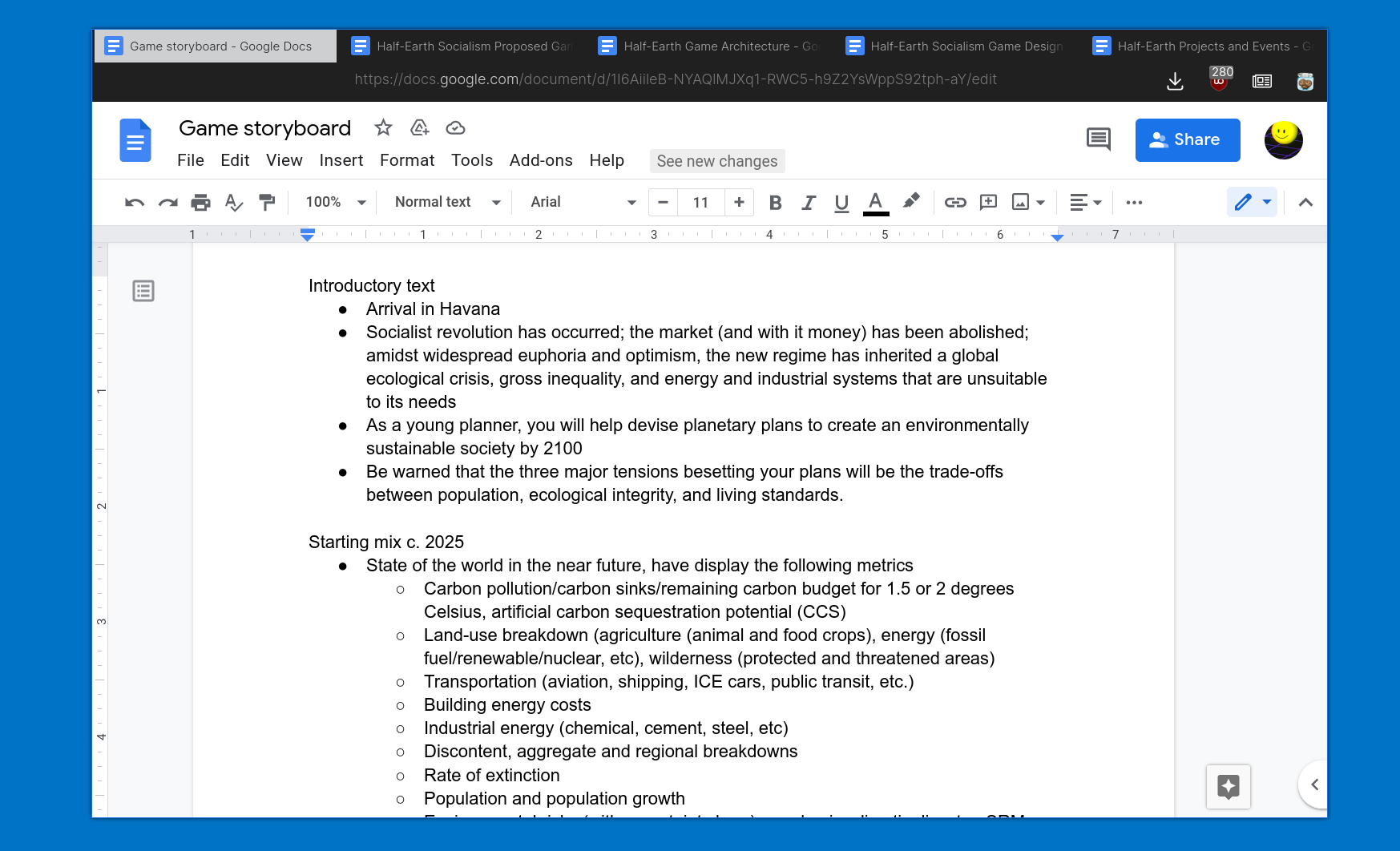
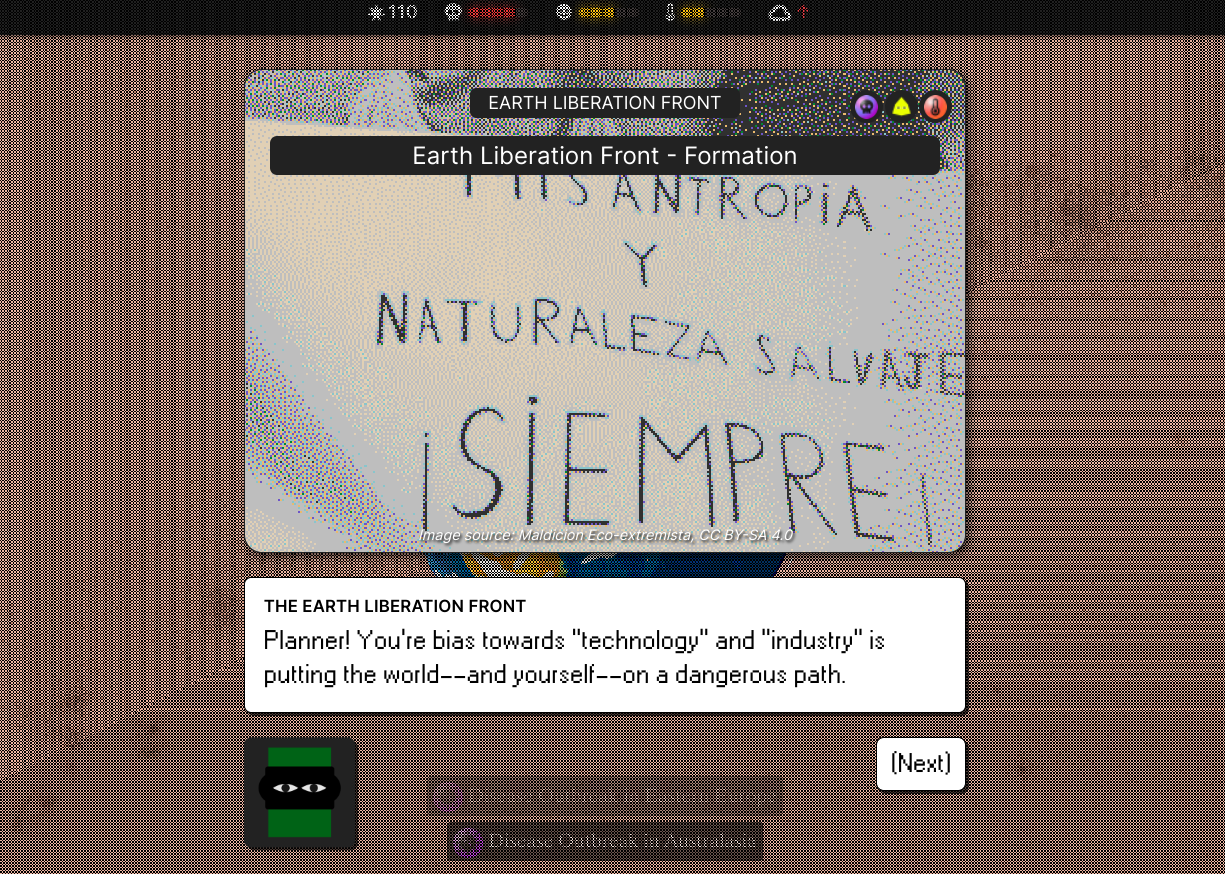

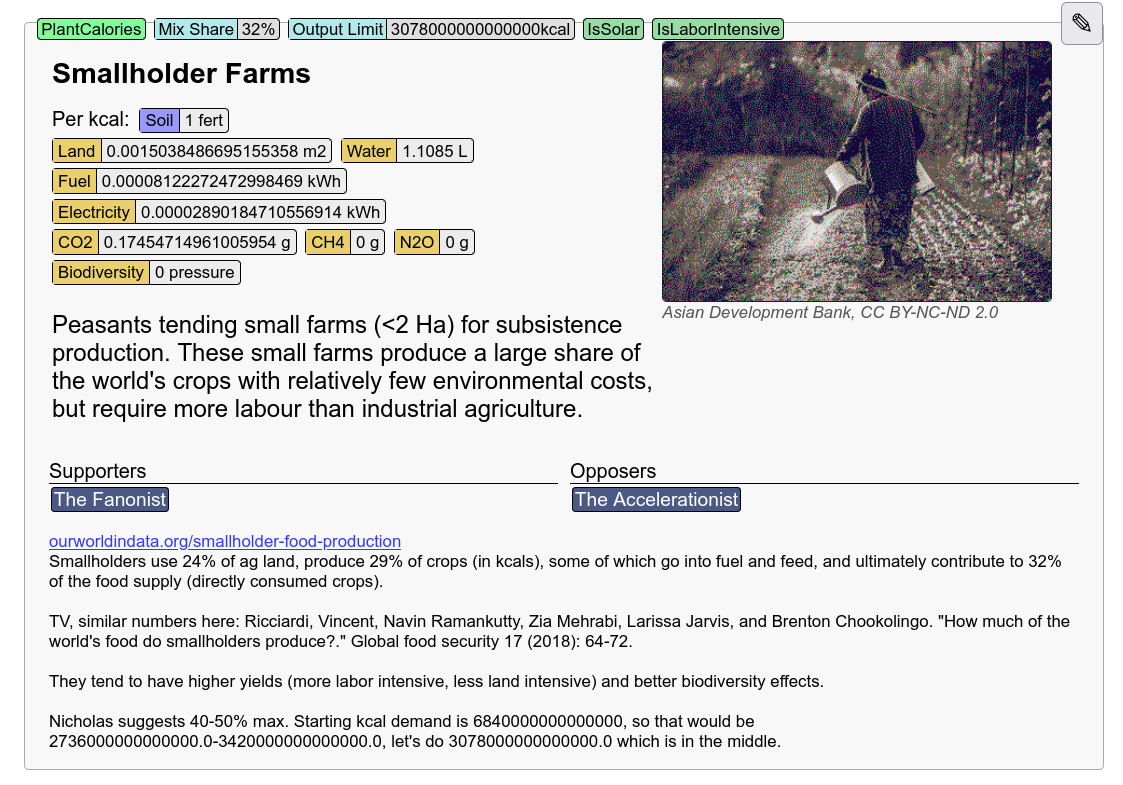

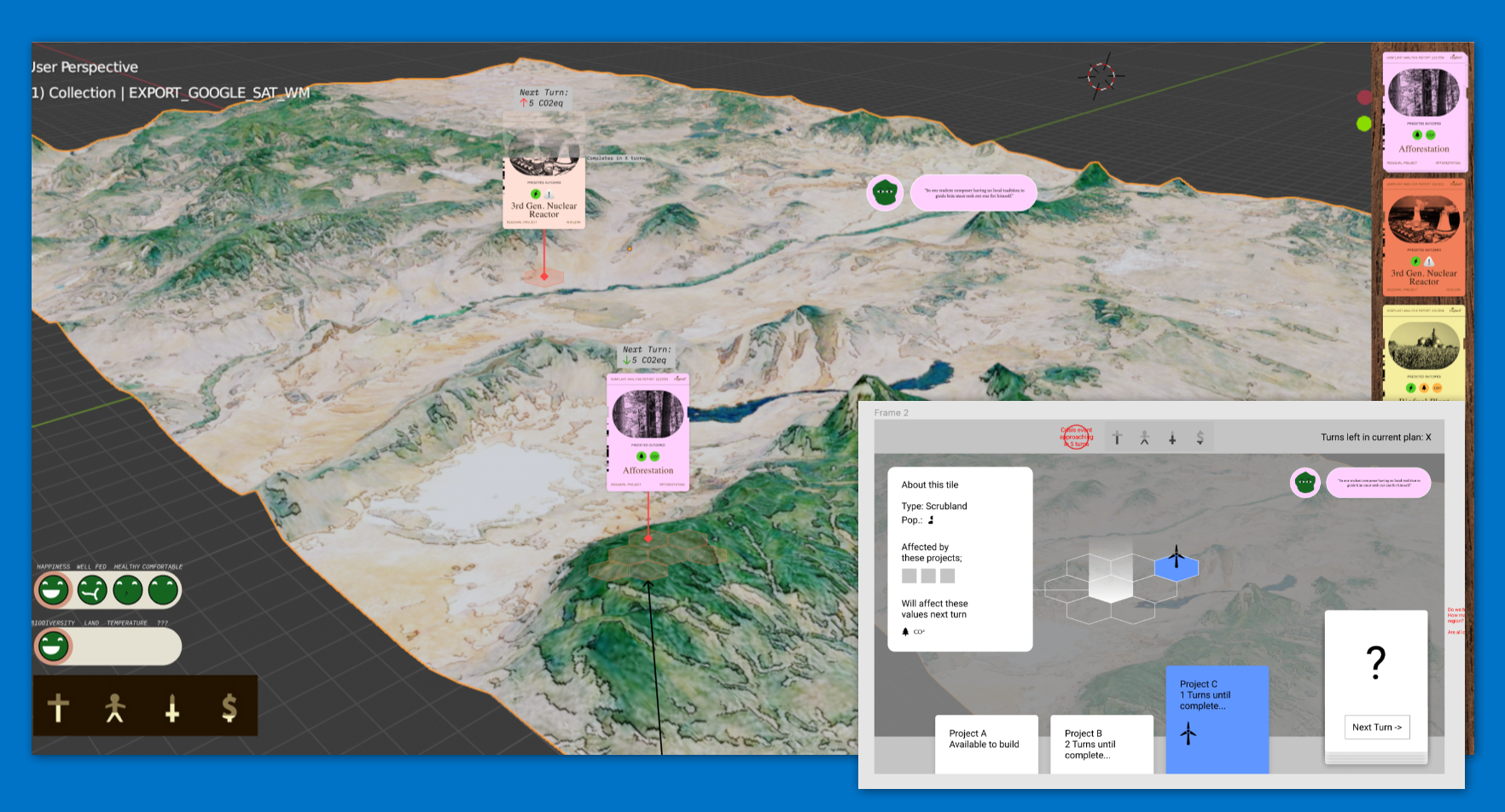
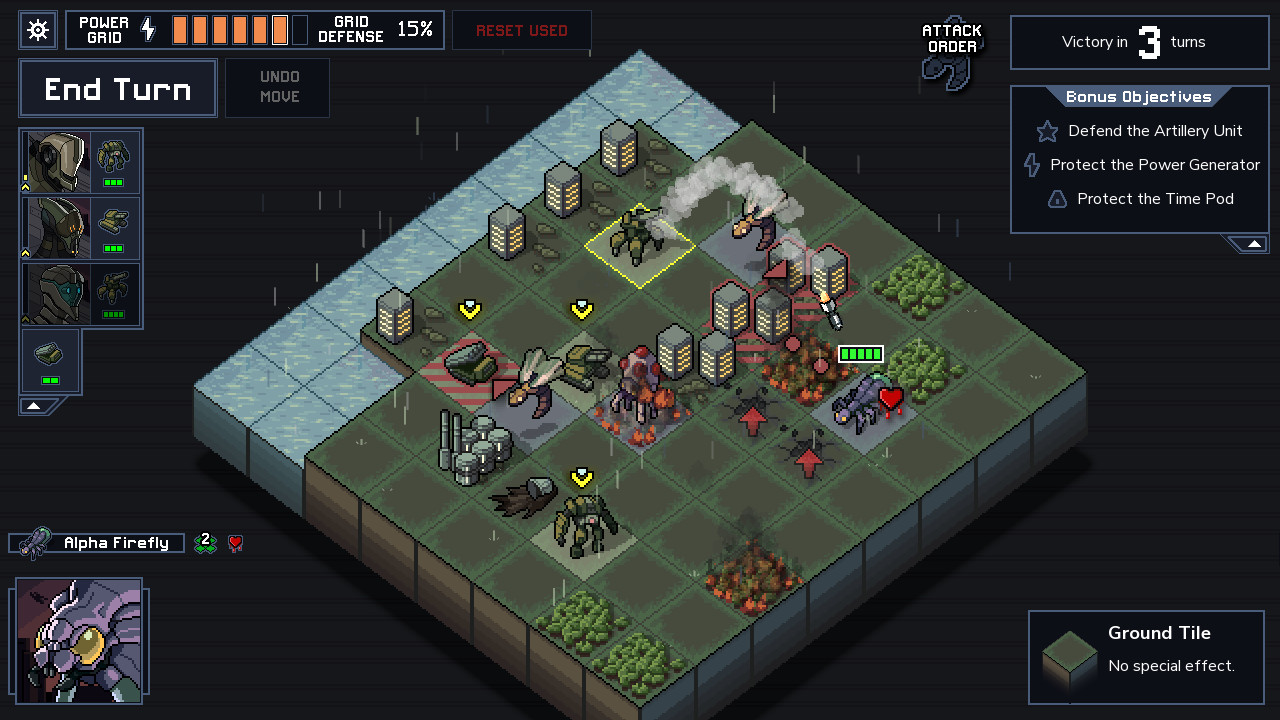
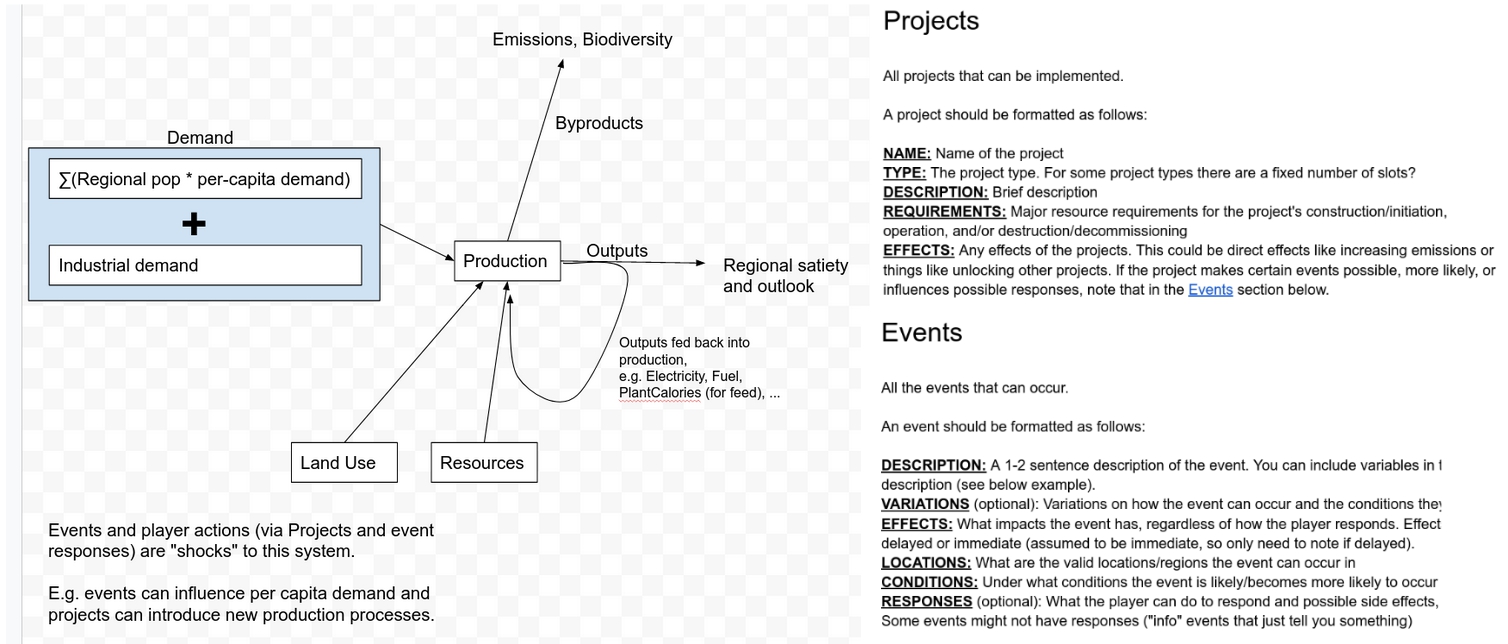


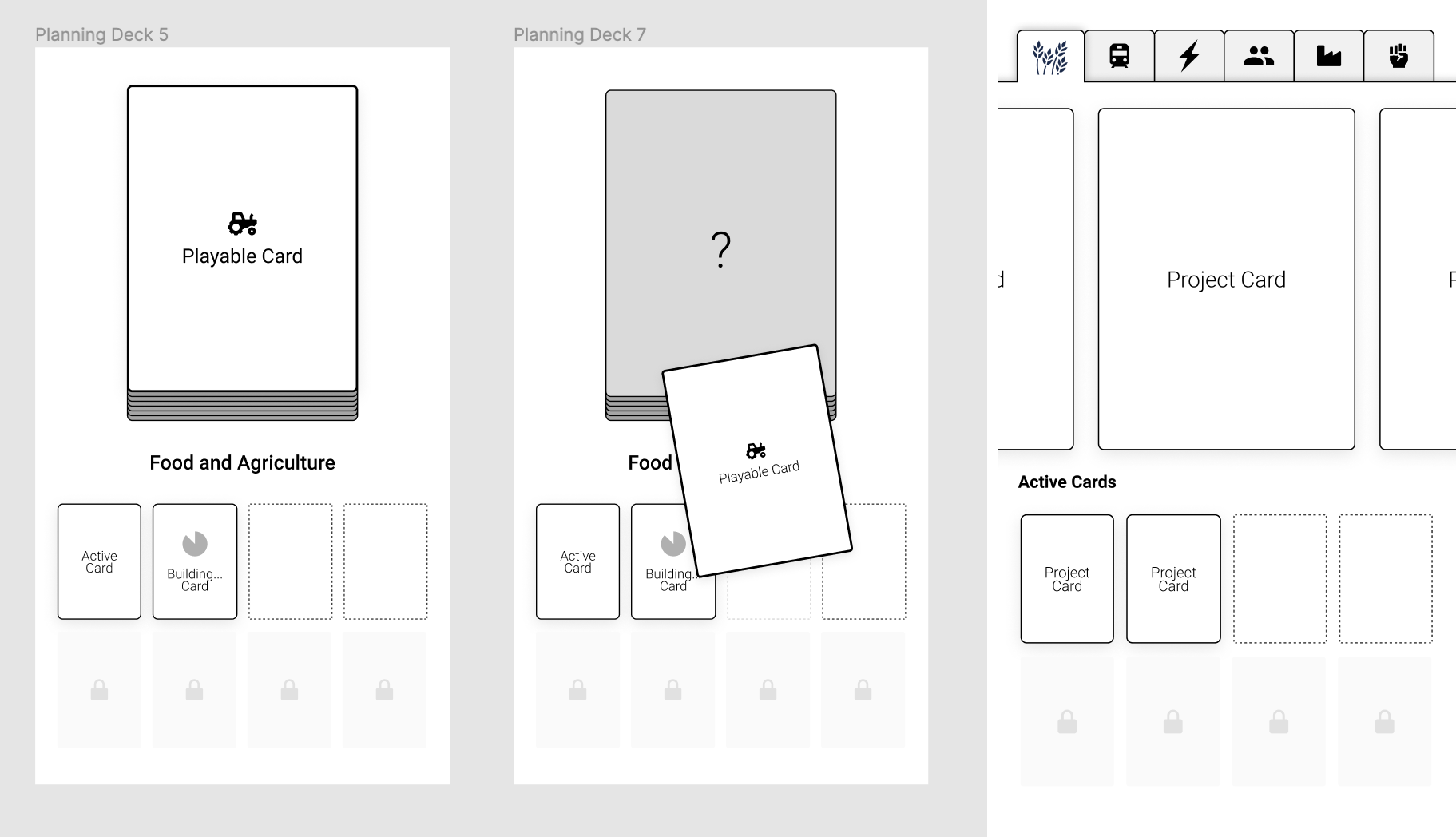

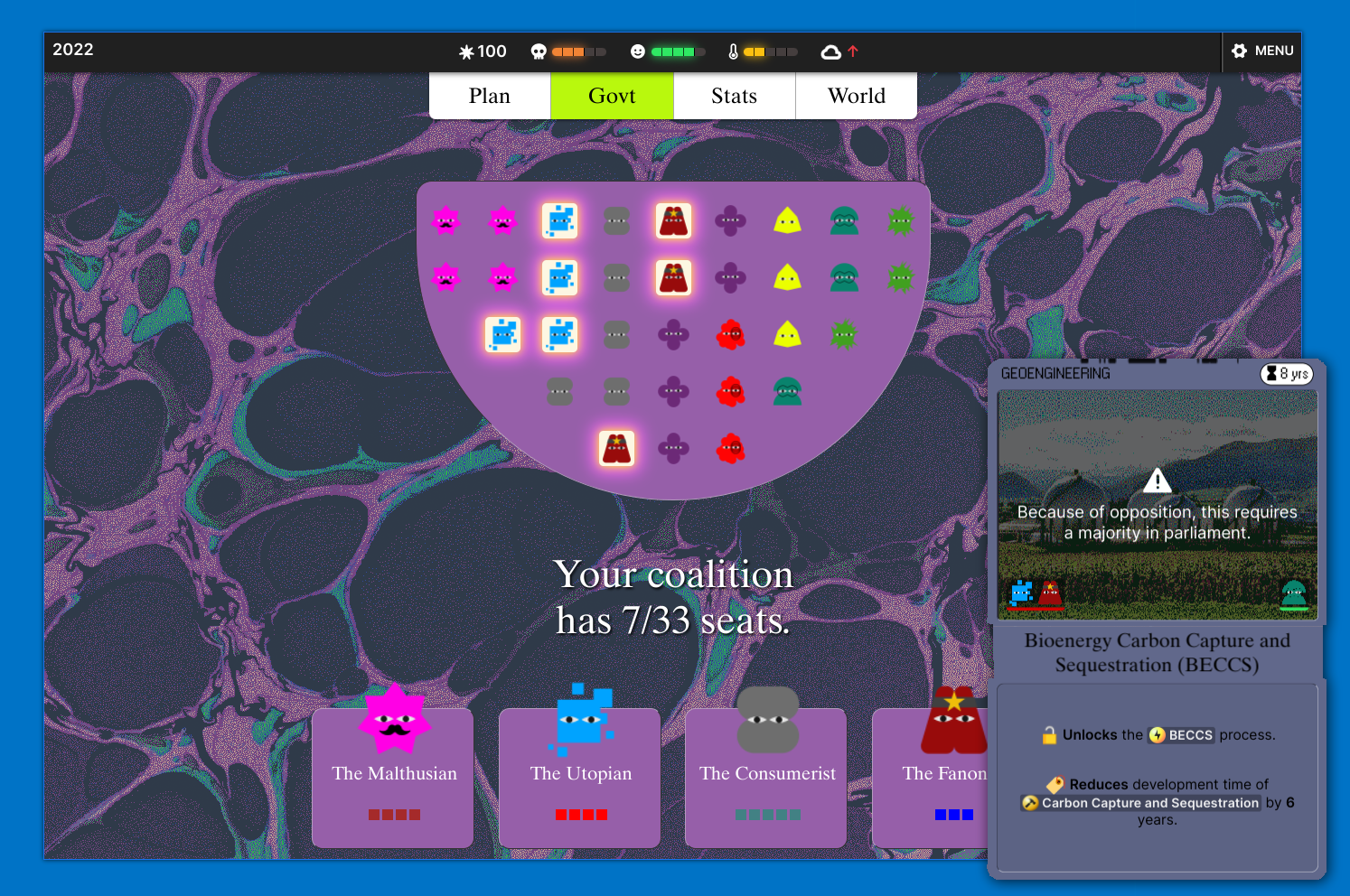
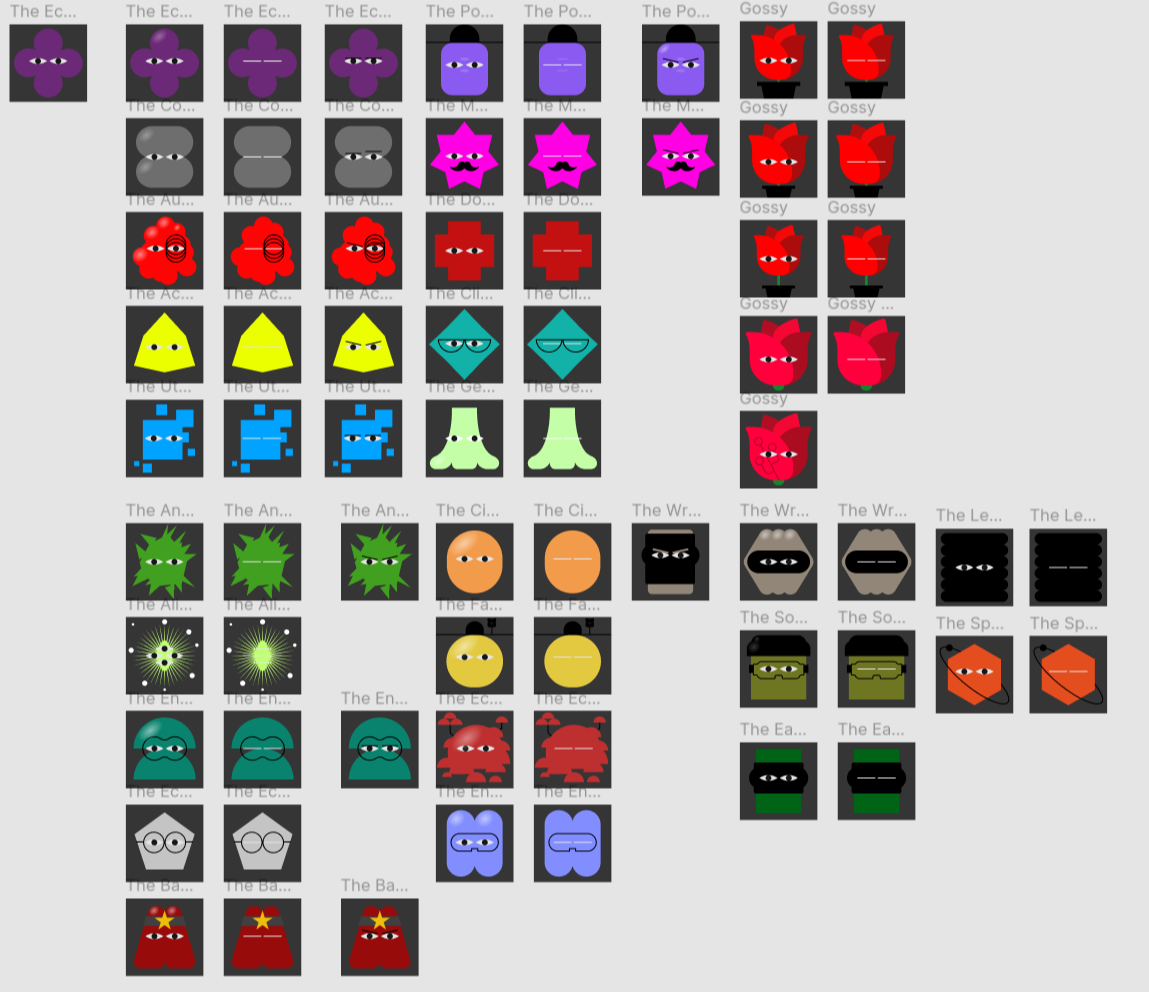

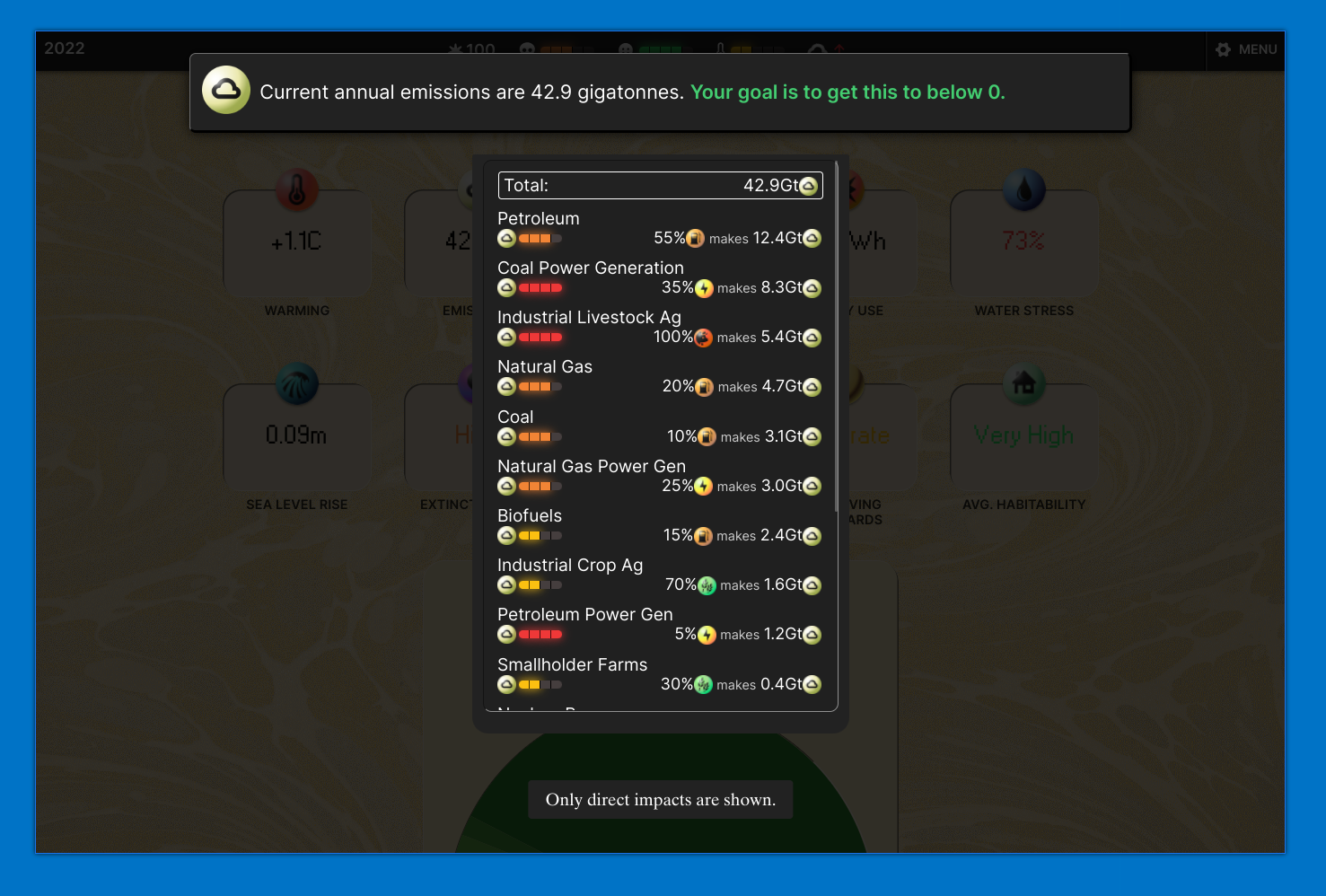


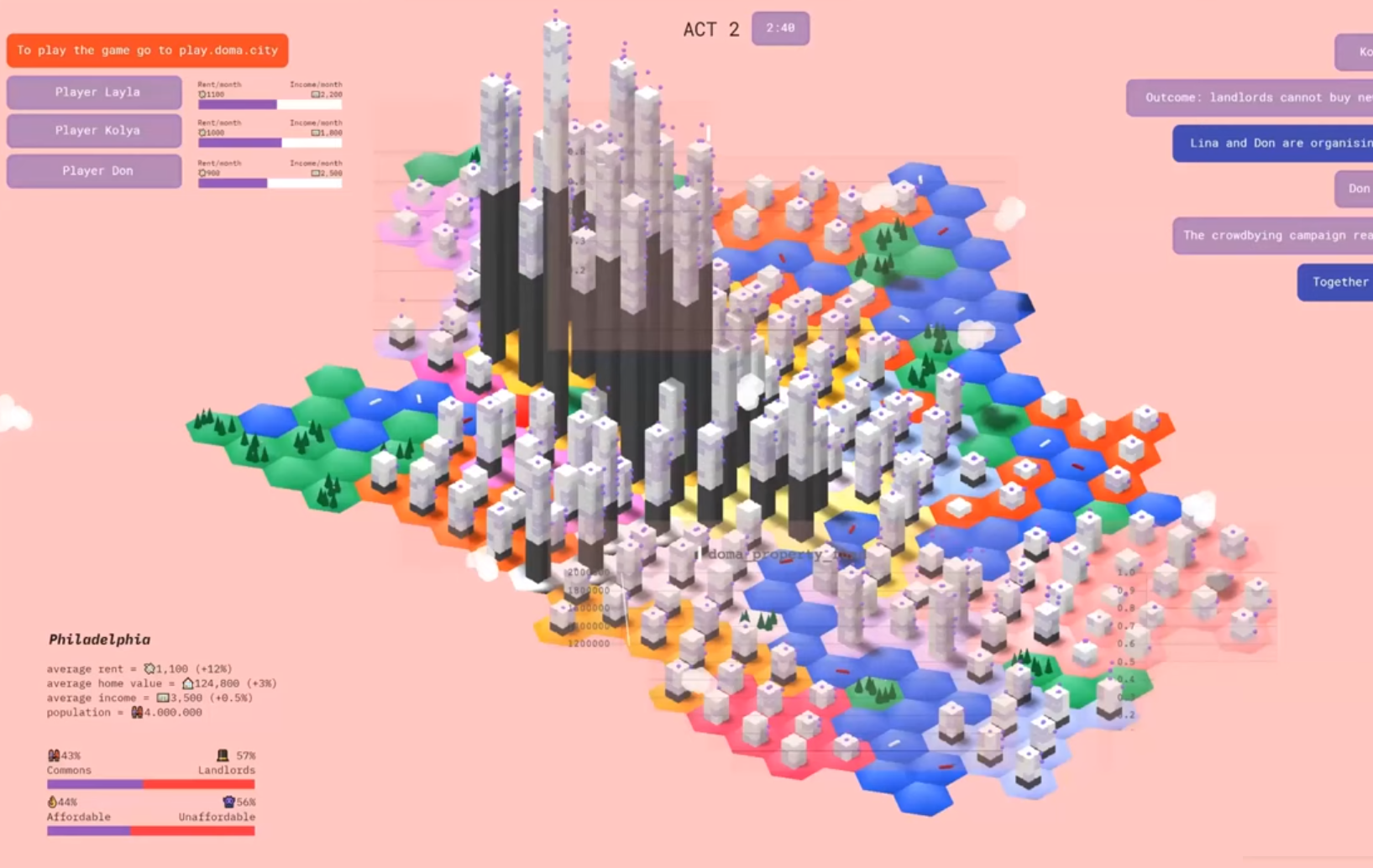
Hello, thank you for coming...I'll be talking about a game we've just launched, Half-Earth Socialism, that accompanies the book by the same name by Drew Pendergrass and Troy Vettese that was just published a couple of weeks ago by Verso.